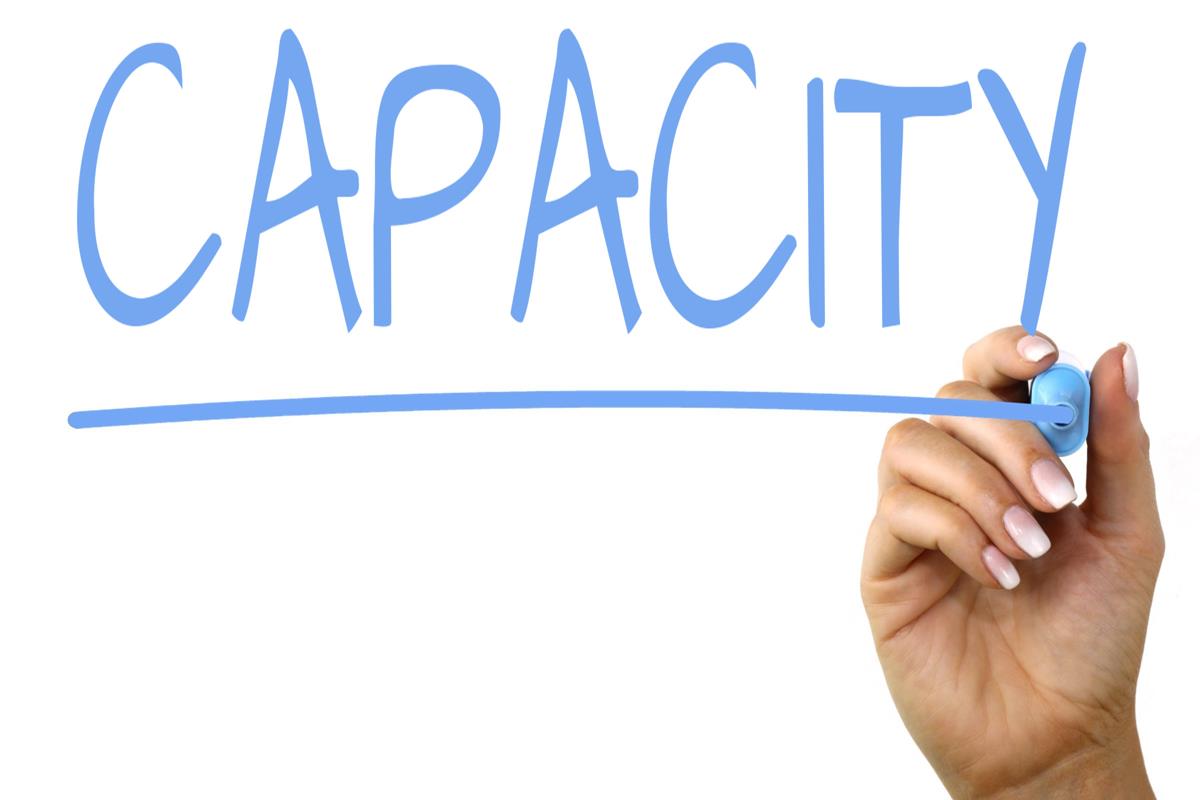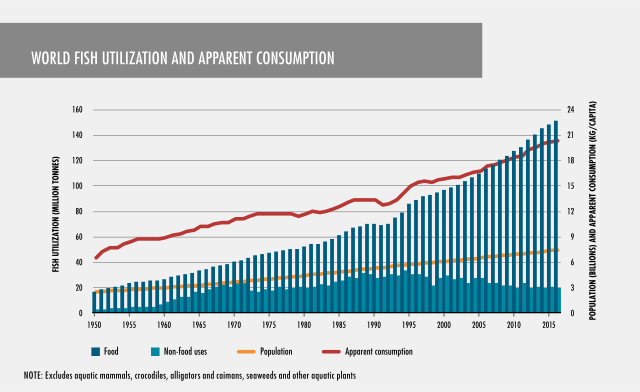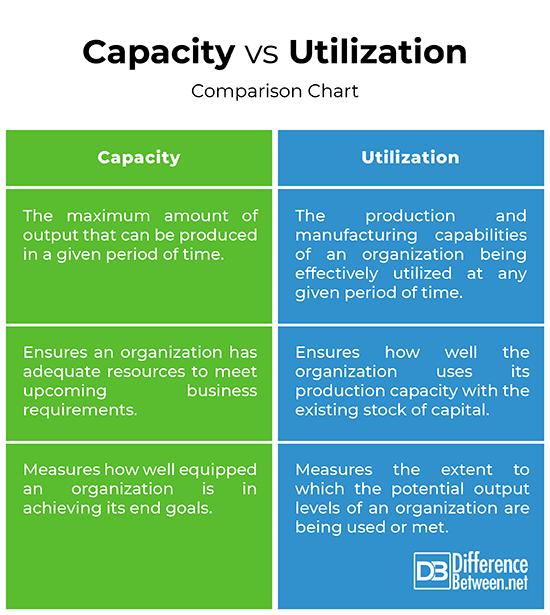Difference Between Capacity and Utilization
Management plays a key role in achieving organizational goals and also ensures proper utilization of resources in a productive way. But the management activities do not take place in a laboratory setting or in some stable environment where everything is controlled and predictable outcomes can be achieved. The reality is very different from what it seems. Management faces challenges almost every day when it comes to managing resources and often without proper working solutions. After all, it’s the job of the management to ensure that the organization functions effectively and achieves its objectives, while tackling all the challenges that come along the way.
When it comes to resource management, the two most fundamental yet equally misunderstood concepts are that of capacity and utilization. These are two key metrics that decide how well an organization is performing in regards to managing its resources and how fast it can develop and utilize its resources to fit the requirements set by the environment compares to its competitors. While both capacity and capacity utilization may seem like similar concepts or even related, but they are quite different. Let’s take a look at each one individually.

What is Capacity?
The capacity, in regards to organizational resource capacity, is the maximum amount of output that can be produced in a given period of time through effective management of an organization’s resources. It refers to the potential of organization to be effective and productive. The capacity of an organization depends on the effective allocation of resources and their management. Organizational resources refer to all the assets that are available at an organization’s disposal for use during the production process. The four major types of resources used by organizations around the world are human, financial, physical and information resources.
The aim of effective capacity planning is to make usable capacity match the product demands and any mismatch between the capacity and demand will result in unhappy customers and underused resources. So, an effective strategy is required to ensure that an organization has adequate resources to meet upcoming business requirements and production output. The capacity of an organization is kind of a performance metric that measures how well equipped an organization is in achieving its end goals within a given period of time. If capacity is less than demand, the organization may lose potential customers, and if the capacity is greater than demand, the organization is left with underused resources.

What is Utilization?
Utilization, in regards to resource utilization, refers to the production and manufacturing capabilities of an organization being effectively utilized at any given period of time. It is a key performance indicator that measures the extent to which the potential output levels of an organization are being used or met. It ensures how well an organization uses its production capacity at a given point of time with the existing stock of capital. It is actual production as a percentage of estimated capacity and cannot exceed 100% except in the short run. It is actually the relation between the potential or theoretical maximum output and the actual production output.
From an operations point of view, actual production in any industry is typically less than the effective capacity and it varies based on how efficiently the workforce is involved, the degree of disruptions, the product quality, efficiency of the equipment, and a number of other factors. This leads to the related measure of utilization, which represents the proportion of designed capacity that is actually being used.
Utilization = amount of capacity used/designed capacity
Difference between Capacity and Utilization
Definition
– The capacity of any organization is the maximum amount of output that can be produced in a given period of time through effective management of that organization’s resources. It refers to the potential of an organization to be effective and productive for a given time period. Capacity utilization, on the other hand, is the production and manufacturing capabilities of an organization being effectively utilized at any given period of time.
Purpose
– The purpose of effective capacity planning is to align the usable capacity with the product demands because any mismatch between the capacity and demand will result in unhappy customers and underused resources. So, an effective capacity planning ensures that an organization has adequate resources to meet upcoming business requirements and production output. Capacity utilization, on the other hand, ensures how well an organization uses its production capacity at a given point of time with the existing stock of capital.
Measure
– Both capacity and utilization are key performance indicators that are used to measure how well an organization is performing in the context of resource management. Capacity measures how well equipped an organization is in achieving its end goals within a given period of time. Utilization, on the other hand, is a key performance indicator that measures the extent to which the potential output levels of an organization are being used or met.
Capacity vs. Utilization: Comparison Chart

Summary
While both capacity and utilization are vaguely related concepts, they are quite different in regards to resource management. Capacity refers to the maximum amount of output that can be produced, while capacity utilization refers to the effective use of resources to meet the potential output. Both are key performance indicators used to measure the current operating efficiency of an organization, which helps provide a clear picture of how well the organization manages their resources to meet the production demands on the short run as well as the long run.
- Difference Between Caucus and Primary - June 18, 2024
- Difference Between PPO and POS - May 30, 2024
- Difference Between RFID and NFC - May 28, 2024
Search DifferenceBetween.net :
Leave a Response
References :
[0]Armstrong, Michael. A Handbook of Management Techniques: The Best-selling Guide to Modern Management Methods. London, United Kingdom: Kogan Page, 2001. Print
[1]Kantola, Jussi. Organizational Resource Management: Theories, Methodologies, and Applications. Florida, United States: CRC Press, 2015. Print
[2]Bennett, Henry. “What is the difference between Capacity and Utilization?.” Keyedin Blog, Keyedin Inc., 28 July, 2019, keyedin.com/article/what-is-the-difference-between-capacity-and-utilization/. Accessed 28 April, 2021.
[3]Image credit: https://www.thebluediamondgallery.com/handwriting/c/capacity.html
[4]Image credit: https://upload.wikimedia.org/wikipedia/commons/thumb/f/f0/World_fish_utilization_and_apparent_consumption.svg/640px-World_fish_utilization_and_apparent_consumption.svg.png
